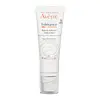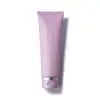What's inside
What's inside
 Key Ingredients
Key Ingredients

No key ingredients
 Benefits
Benefits

 Concerns
Concerns

 Ingredients Side-by-side
Ingredients Side-by-side

Water
Skin ConditioningCaprylic/Capric Triglyceride
MaskingGlycerin
HumectantPolyglyceryl-3 Methylglucose Distearate
EmulsifyingPropanediol
SolventGlyceryl Stearate
EmollientCetearyl Alcohol
EmollientXylitylglucoside
HumectantBetaine
HumectantPhospholipids
Skin ConditioningLinoleic Acid
CleansingGlycine Soja Sterols
EmollientCeramide NP
Skin ConditioningCeramide AP
Skin ConditioningCeramide EOP
Skin ConditioningPhytosphingosine
Skin ConditioningCholesterol
EmollientAloe Barbadensis Leaf Juice
Skin ConditioningTasmannia Lanceolata Fruit/Leaf Extract
AntioxidantCucumis Sativus Seed Oil
EmollientEctoin
Skin ConditioningHydroxyectoin
BufferingSodium Lauroyl Lactylate
EmulsifyingZingiber Officinale Root Extract
MaskingBisabolol
MaskingTocopherol
AntioxidantRosmarinus Officinalis Leaf Extract
AntimicrobialCarbomer
Emulsion StabilisingAnhydroxylitol
HumectantOryza Sativa Bran Extract
Skin Conditioning1,2-Hexanediol
Skin ConditioningStearic Acid
CleansingSodium Lauroyl Glutamate
Saccharide Isomerate
HumectantXylitol
HumectantTrisodium Ethylenediamine Disuccinate
Caprylhydroxamic Acid
Helianthus Annuus Seed Oil
EmollientXanthan Gum
EmulsifyingCitric Acid
BufferingSodium Citrate
BufferingWater, Caprylic/Capric Triglyceride, Glycerin, Polyglyceryl-3 Methylglucose Distearate, Propanediol, Glyceryl Stearate, Cetearyl Alcohol, Xylitylglucoside, Betaine, Phospholipids, Linoleic Acid, Glycine Soja Sterols, Ceramide NP, Ceramide AP, Ceramide EOP, Phytosphingosine, Cholesterol, Aloe Barbadensis Leaf Juice, Tasmannia Lanceolata Fruit/Leaf Extract, Cucumis Sativus Seed Oil, Ectoin, Hydroxyectoin, Sodium Lauroyl Lactylate, Zingiber Officinale Root Extract, Bisabolol, Tocopherol, Rosmarinus Officinalis Leaf Extract, Carbomer, Anhydroxylitol, Oryza Sativa Bran Extract, 1,2-Hexanediol, Stearic Acid, Sodium Lauroyl Glutamate, Saccharide Isomerate, Xylitol, Trisodium Ethylenediamine Disuccinate, Caprylhydroxamic Acid, Helianthus Annuus Seed Oil, Xanthan Gum, Citric Acid, Sodium Citrate
 Reviews
Reviews

Ingredients Explained
These ingredients are found in both products.
Ingredients higher up in an ingredient list are typically present in a larger amount.
This ingredient is an emollient, solvent, and texture enhancer. It is considered a skin-softener by helping the skin prevent moisture loss.
It helps thicken a product's formula and makes it easier to spread by dissolving clumping compounds.
Caprylic Triglyceride is made by combining glycerin with coconut oil, forming a clear liquid.
While there is an assumption Caprylic Triglyceride can clog pores due to it being derived from coconut oil, there is no research supporting this.
Learn more about Caprylic/Capric TriglycerideCetearyl alcohol is a mixture of two fatty alcohols: cetyl alcohol and stearyl alcohol. It is mainly used as an emulsifier. Emulsifiers help prevent the separation of oils and products. Due to its composition, it can also be used to thicken a product or help create foam.
Cetearyl alcohol is an emollient. Emollients help soothe and hydrate the skin by trapping moisture.
Studies show Cetearyl alcohol is non-toxic and non-irritating. The FDA allows products labeled "alcohol-free" to have fatty alcohols.
This ingredient is usually derived from plant oils such as palm, vegetable, or coconut oils. There is debate on whether this ingredient will cause acne.
Due to the fatty acid base, this ingredient may not be Malassezia folliculitis safe.
Learn more about Cetearyl AlcoholCitric Acid is an alpha hydroxy acid (AHA) naturally found in citrus fruits like oranges, lemons, and limes.
Like other AHAs, citric acid can exfoliate skin by breaking down the bonds that hold dead skin cells together. This helps reveal smoother and brighter skin underneath.
However, this exfoliating effect only happens at high concentrations (20%) which can be hard to find in cosmetic products.
Due to this, citric acid is usually included in small amounts as a pH adjuster. This helps keep products slightly more acidic and compatible with skin's natural pH.
In skincare formulas, citric acid can:
While it can provide some skin benefits, research shows lactic acid and glycolic acid are generally more effective and less irritating exfoliants.
Most citric acid used in skincare today is made by fermenting sugars (usually from molasses). This synthetic version is identical to the natural citrus form but easier to stabilize and use in formulations.
Read more about some other popular AHA's here:
Learn more about Citric AcidGlycerin is already naturally found in your skin. It helps moisturize and protect your skin.
A study from 2016 found glycerin to be more effective as a humectant than AHAs and hyaluronic acid.
As a humectant, it helps the skin stay hydrated by pulling moisture to your skin. The low molecular weight of glycerin allows it to pull moisture into the deeper layers of your skin.
Hydrated skin improves your skin barrier; Your skin barrier helps protect against irritants and bacteria.
Glycerin has also been found to have antimicrobial and antiviral properties. Due to these properties, glycerin is often used in wound and burn treatments.
In cosmetics, glycerin is usually derived from plants such as soybean or palm. However, it can also be sourced from animals, such as tallow or animal fat.
This ingredient is organic, colorless, odorless, and non-toxic.
Glycerin is the name for this ingredient in American English. British English uses Glycerol/Glycerine.
Learn more about GlycerinWater. It's the most common cosmetic ingredient of all. You'll usually see it at the top of ingredient lists, meaning that it makes up the largest part of the product.
So why is it so popular? Water most often acts as a solvent - this means that it helps dissolve other ingredients into the formulation.
You'll also recognize water as that liquid we all need to stay alive. If you see this, drink a glass of water. Stay hydrated!
Learn more about WaterXanthan gum is used as a stabilizer and thickener within cosmetic products. It helps give products a sticky, thick feeling - preventing them from being too runny.
On the technical side of things, xanthan gum is a polysaccharide - a combination consisting of multiple sugar molecules bonded together.
Xanthan gum is a pretty common and great ingredient. It is a natural, non-toxic, non-irritating ingredient that is also commonly used in food products.
Learn more about Xanthan Gum